Step into the glamour of the Roaring Twenties with our exploration of “1920s Hairstyles: The Top 9 Vintage Glam Looks.” The Jazz Age not only revolutionized music and fashion but also left an indelible mark on hairstyling. From the iconic bob that symbolized newfound liberation to the intricate finger waves embodying sophistication, this blog delves into the epitome of 1920s elegance.
Explore the rebellion of the Shingle Cut, the allure of Marcel Waves, and the whimsy of Victory Rolls. Discover how Art Deco accessories and flapper headbands with feathers added the finishing touches to these timeless looks. Join us on a journey through an era that redefined style and individuality, celebrating the enduring charm of these vintage glam hairstyles that continue to captivate and inspire.
Vintage Glam Looks
1. The Bob
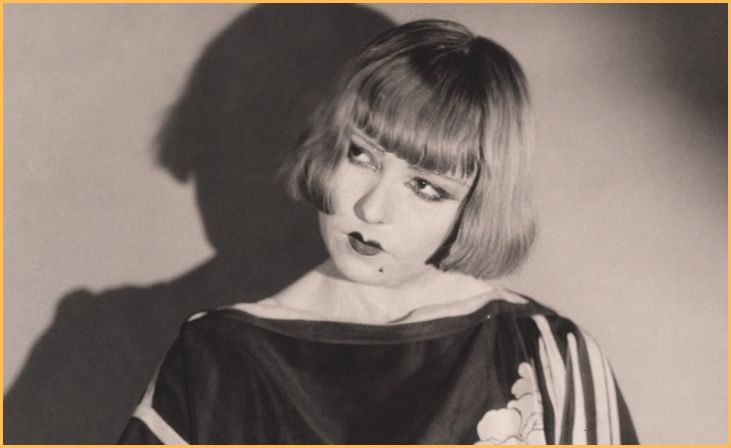
“Vintage Glam Looks” encapsulate the timeless allure of classic styles that have transcended eras, leaving an indelible mark on the world of fashion and beauty. These looks draw inspiration from the glamorous aesthetics of bygone decades, often characterized by sophistication, opulence, and a sense of nostalgia. From the iconic finger waves of the 1920s, exuding Jazz Age elegance, to the Hollywood-inspired curls of the 1950s, vintage glam looks celebrate the artistry of hairstyling across different periods.
Whether it’s the sleek bobs of the 1960s or the free-spirited, bohemian waves of the 1970s, each vintage glam look tells a unique story, reflecting the societal and cultural influences of its time. Embracing these styles today allows for a timeless connection to the glamour of the past, showcasing the enduring beauty found in the rich history of hairstyling.
For More- 9 Beautiful Formal Hairstyles
2. Finger Waves
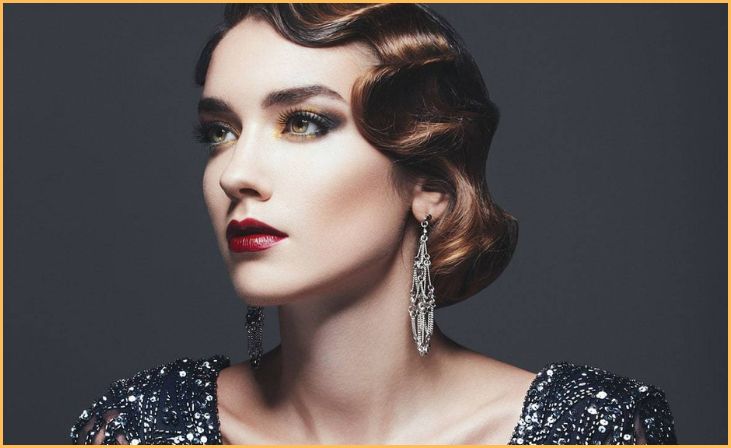
Finger waves, an iconic hairstyle originating in the 1920s, represent a pinnacle of sophisticated glamour from the Jazz Age. This intricate styling technique involves shaping hair into continuous, ‘S’-shaped waves that lie close to the scalp. Achieved by skillfully using fingers, combs, and styling products, finger waves exude an air of refinement and elegance.
Popularized by flapper icons and Hollywood starlets of the era, this meticulous hairstyle became synonymous with the exuberance and rebellion of the Roaring Twenties. Beyond its visual appeal, finger waves reflect the societal shift of the time, as women sought to break free from traditional norms. Today, finger waves continue to be a revered vintage glam look, evoking the spirit of an era that embraced change, artistic expression, and a newfound sense of freedom.
3. Marcel Waves
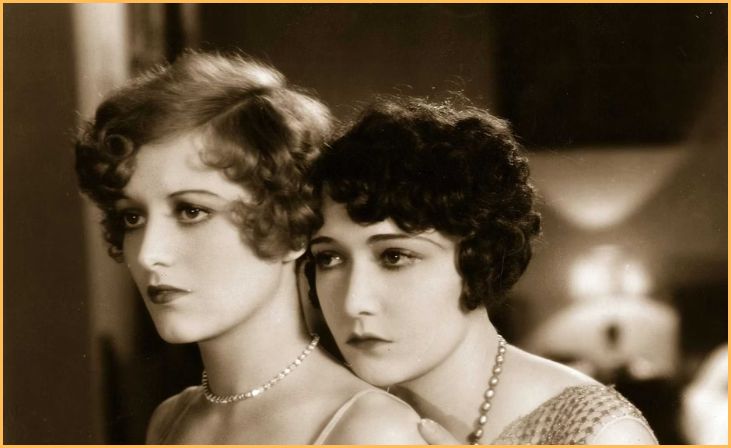
Marcel waves, named after the French hairstylist Marcel Grateau, epitomize the refined glamour of the 1920s. This distinctive hairstyle involves the use of a hot curling iron to create deep, uniform waves that cascade gracefully, offering a polished and elegant appearance. Marcel waves gained immense popularity during the Jazz Age, adorning the heads of Hollywood starlets and fashionable women alike.
Beyond their aesthetic appeal, Marcel waves symbolize a departure from the more rigid and elaborate styles of the preceding era, reflecting the evolving societal attitudes and a desire for a more liberated, modern look. With their timeless charm and association with the opulence of the Roaring Twenties, Marcel waves remain an enduring vintage glam look, evoking the spirit of a bygone era that celebrated both style and societal change.
4. The Shingle Cut
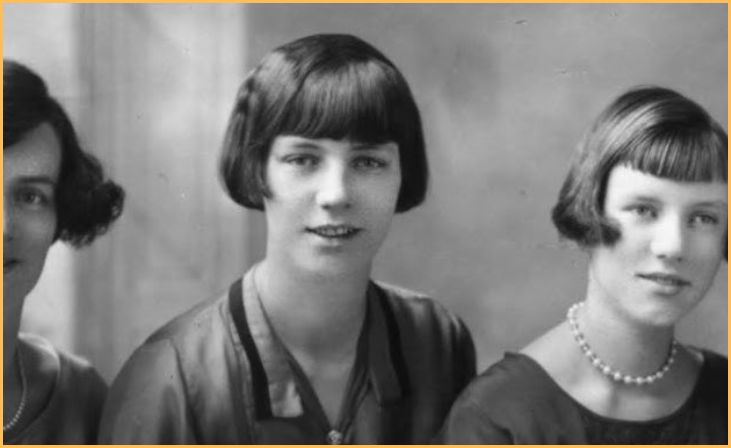
The Shingle Cut, also known as the Eton Crop, is a bold and revolutionary hairstyle that emerged during the 1920s, symbolizing the changing roles and attitudes of women in society. This avant-garde look features closely cropped hair at the back and sides, creating a sharp contrast with longer hair on top. Inspired by the short hairstyles seen on men attending Eton College, the Shingle Cut challenged traditional notions of femininity and introduced a more androgynous aesthetic.
Popularized by daring women seeking a break from conventional norms, this style became a powerful symbol of female empowerment and liberation during the Jazz Age. The Shingle Cut remains an iconic representation of the era’s rebellious spirit, showcasing how hairstyles can transcend mere fashion and become powerful statements reflecting societal shifts and cultural revolutions.
5. Cloche Hat with Tucked Hair
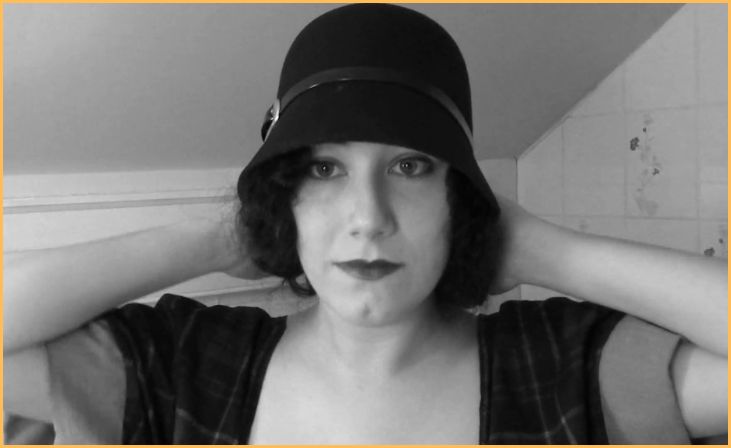
The Cloche Hat with Tucked Hair is an iconic and stylish pairing that epitomizes the fashionable elegance of the 1920s. The cloche hat, with its bell-like shape that closely frames the head, became immensely popular during this era, and its design often influenced the accompanying hairstyle. Women would neatly tuck their hair inside the snug-fitting cloche hat, creating a sleek and close-fitting look.
This trend not only showcased the chic synergy between fashion and hairstyling but also reflected the modern, liberated spirit of the time. The Cloche Hat with Tucked Hair remains a symbol of the Jazz Age’s fashion-forward sensibilities, illustrating how accessories and hairstyles coalesced to create a distinctive and harmonious aesthetic during this transformative period in history.
6. The Eton Crop
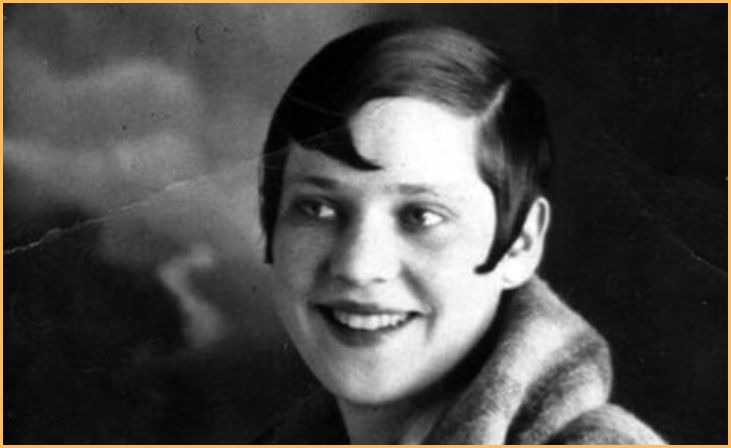
The Eton Crop, a daring and progressive hairstyle, emerged during the 1920s as a symbol of women’s empowerment and a departure from traditional norms. Inspired by the short hairstyles of men attending Eton College, this cut featured closely cropped hair that framed the face, challenging societal expectations of femininity.
The Eton Crop became a bold statement of modernity and rebellion, embraced by the flapper generation seeking to redefine their identity and break free from conventional constraints. This androgynous look not only symbolized a visual departure from traditional long hairstyles but also embodied the spirit of a generation pushing boundaries and embracing newfound freedoms. The Eton Crop remains an enduring symbol of the Jazz Age, illustrating how hairstyling can be a powerful form of self-expression and a reflection of societal shifts.
7. Victory Rolls
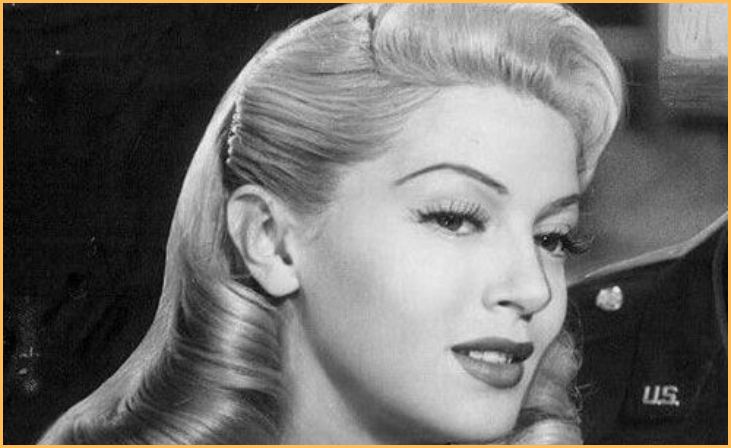
Victory Rolls, although often associated with the 1940s, have roots that trace back to the 1920s. This iconic hairstyle became emblematic of the resilience and optimism that followed the tumultuous years of the Great War. Victory Rolls are characterized by voluminous rolls or twists of hair, often positioned on the crown or sides of the head. While the 1920s version was a precursor to the more refined style of the 1940s, both iterations exude a playful and polished charm.
Typically adorned with accessories like ribbons or headbands, Victory Rolls in the 1920s symbolized a spirit of optimism and vitality, making them a whimsical and fashionable choice for women who embraced both style and a newfound sense of liberation during this transformative period in history.
8. Art Deco Accessories
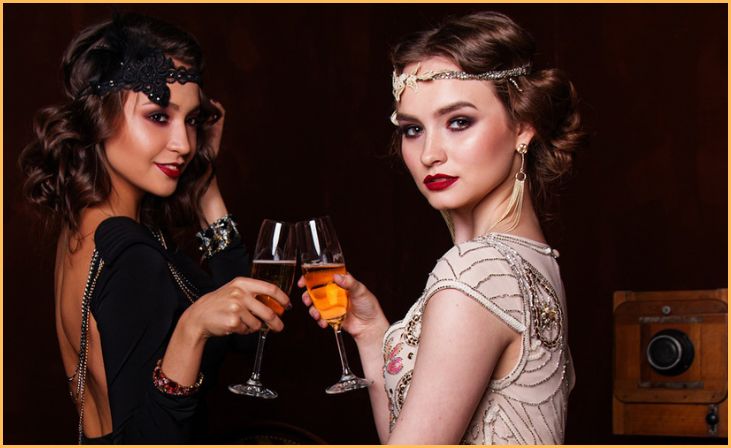
Art Deco Accessories, popularized during the 1920s, played a pivotal role in defining the aesthetic of the era. Characterized by geometric shapes, bold lines, and intricate patterns, these accessories became integral to hairstyling, elevating looks to new heights of glamour. Headbands, barrettes, and combs adorned with Art Deco elements added a touch of sophistication to the sleek bobs and intricate updos of the time.
The symmetrical and stylized designs reflected the broader Art Deco movement’s influence on fashion and design. By incorporating these accessories into their hairstyles, women not only embraced the modern and luxurious spirit of the Jazz Age but also showcased an attention to detail that became synonymous with the era’s glamorous and avant-garde style. Art Deco Accessories continue to be celebrated for their timeless elegance and their role in shaping the visual language of the Roaring Twenties.
9. Flapper Headband with Feathers
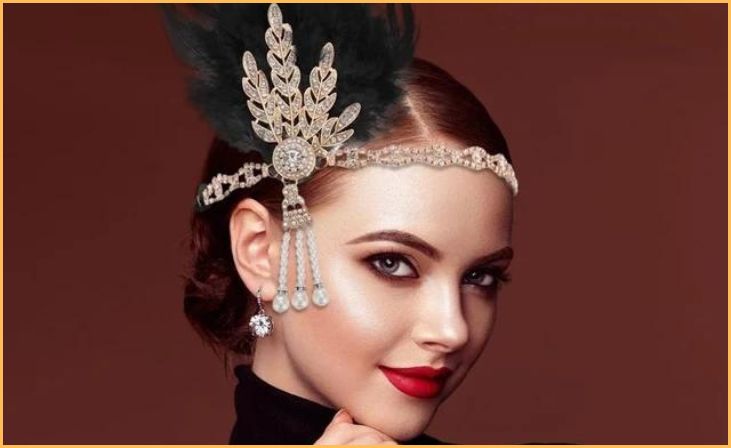
The Flapper Headband with Feathers stands as an iconic accessory that defined the vivacious and carefree spirit of the 1920s flapper. This stylish headband, often worn low across the forehead, featured ornate embellishments like feathers, beads, or sequins. The flapper headband became a symbol of the Jazz Age rebellion, signaling a departure from traditional feminine norms. Paired with the iconic bob haircut, the headband added a playful and exotic touch, reflecting the free-spirited attitude of the flapper generation.
Beyond its decorative appeal, this accessory embodied the era’s celebration of individuality and the pursuit of fun, making it a timeless symbol of the Roaring Twenties’ unique blend of style and irreverence. Today, the Flapper Headband with Feathers remains a celebrated vintage fashion statement, evoking the energetic and daring ethos of one of the most iconic decades in history.
Also Read- 8 Boho Chic Hairstyles for Festival-Ready Hair
Conclusion
The 1920s witnessed a revolutionary departure from the constraints of the past, both socially and stylistically. The Top 9 Vintage Glam Looks of 1920s hairstyles encapsulate the vibrancy, rebellion, and elegance of an era that redefined fashion and beauty. From the iconic bob to the whimsical Victory Rolls, each style tells a story of a generation embracing change and pushing boundaries. Today, these vintage glam looks continue to inspire, reminding us of the enduring allure of an era that dared to be different. As we celebrate the timeless elegance of 1920s hairstyles, we pay homage to the women who, with scissors and style, left an indelible mark on the pages of fashion history.
FAQs
Many 1920s hairstyles are adaptable for various hair lengths. While shorter cuts like the bob were iconic, styles like finger waves and updos can be modified for longer hair.
Yes, 1920s hairstyles offer versatility for different face shapes. The key is to choose a style that complements your features, whether it’s the sleek bob, finger waves, or a shingle cut.
Many 1920s hairstyles are adaptable for both everyday wear and themed events. Bobs, waves, and updos can be styled to suit various occasions, from casual outings to special celebrations.

